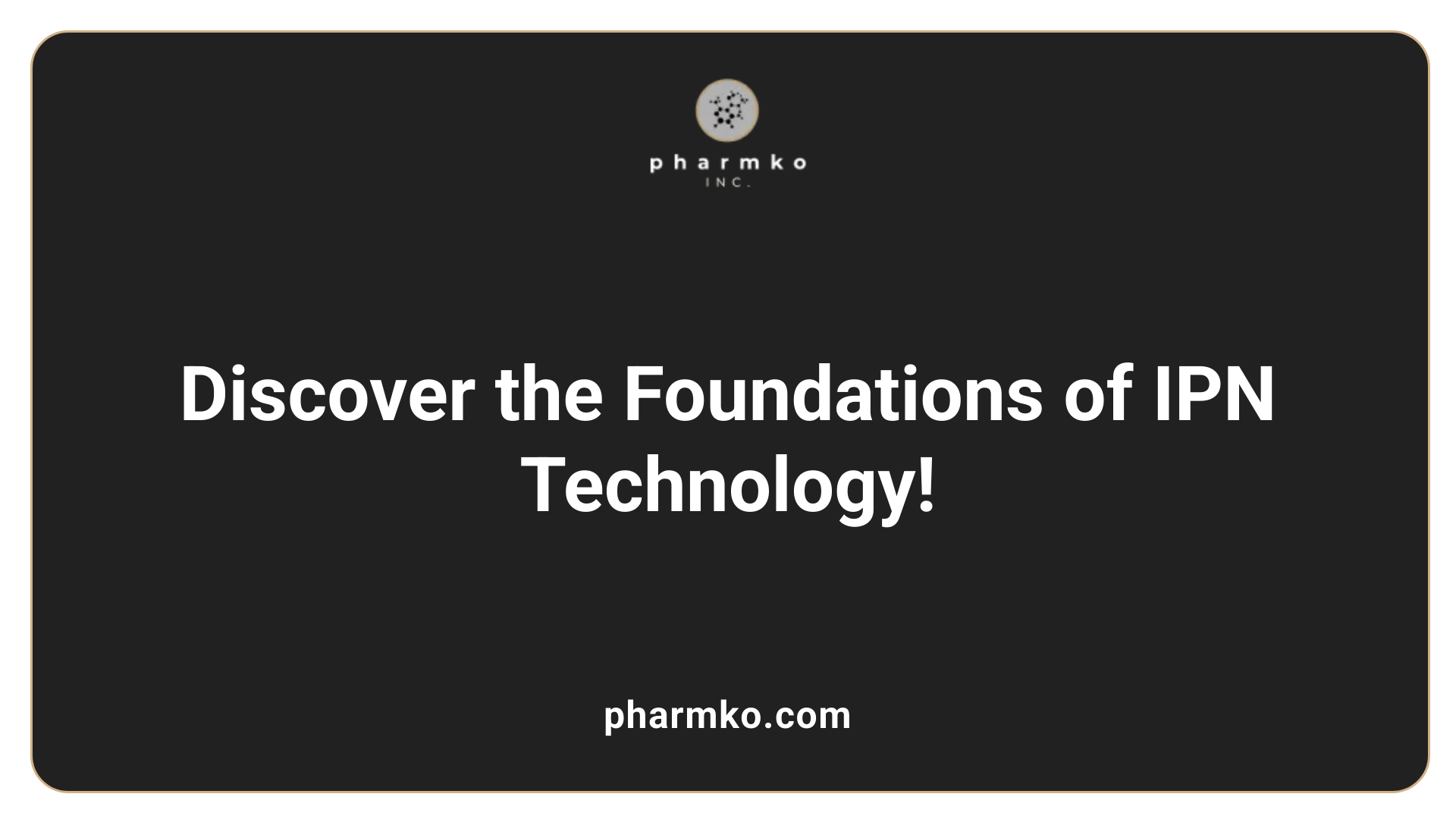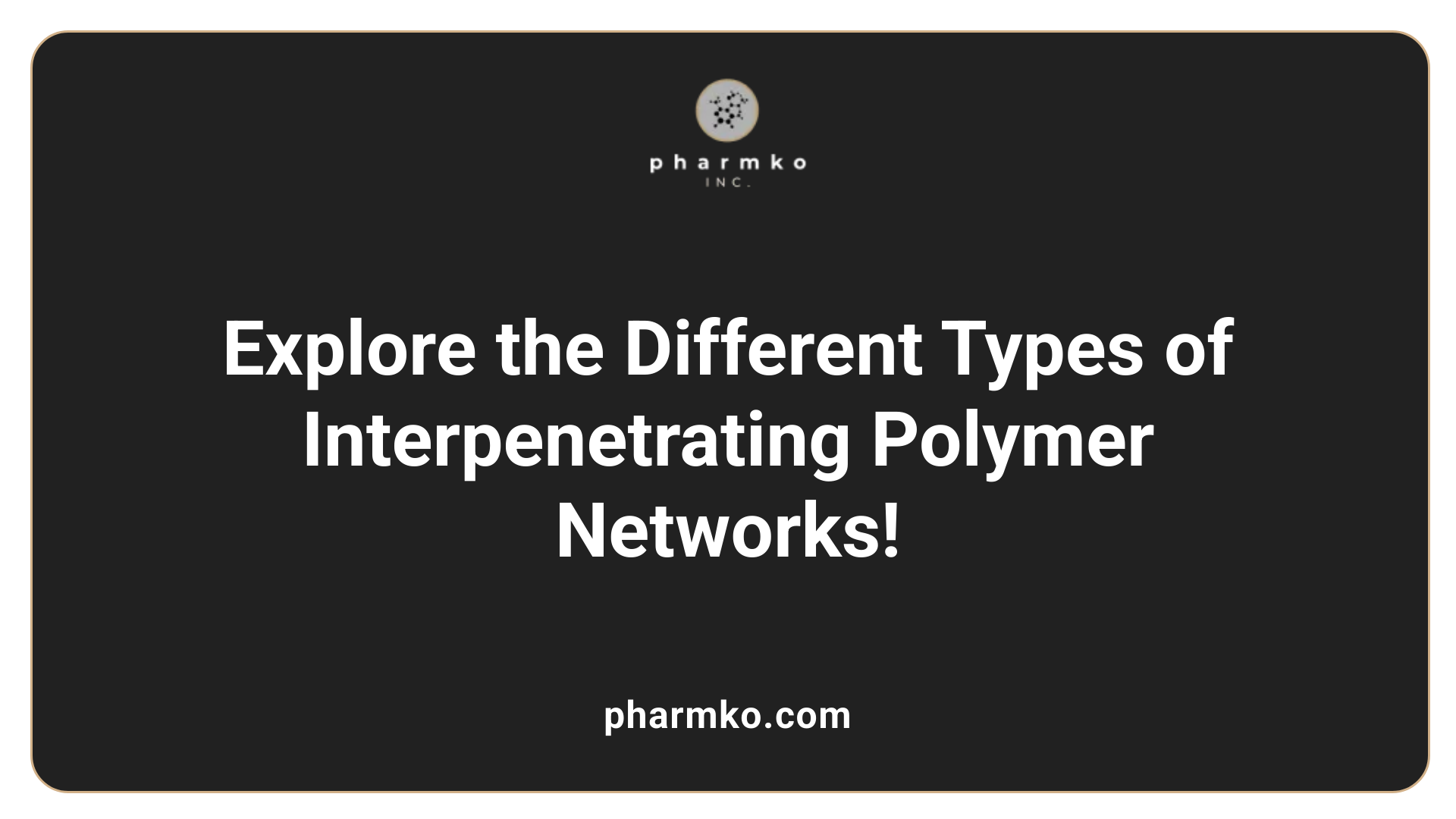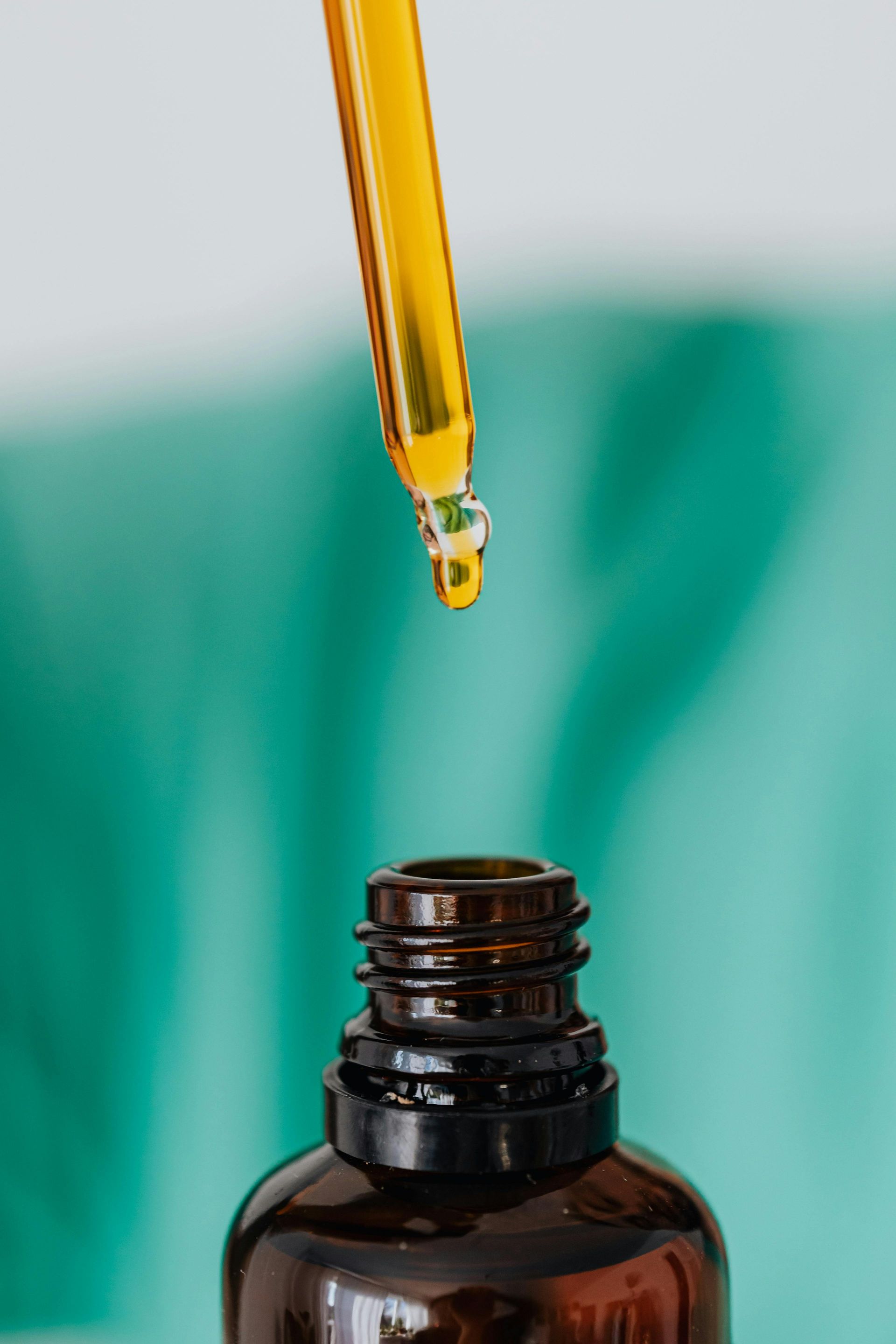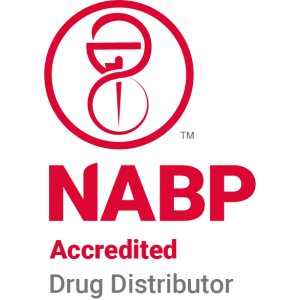Advancements in IPN Technology and Delivery Methods
Interpenetrating polymer networks (IPNs) are revolutionizing the landscape of drug delivery with their unique structural properties and advanced functionality. As these networks integrate different polymer types, they provide significant advantages such as enhanced biocompatibility, nontoxicity, and environmental responsiveness — all crucial for delivering therapeutic agents effectively and safely. The evolution of IPN technology over the years has opened a plethora of opportunities in biomedical applications, positioning them as a cornerstone of modern drug delivery systems.
Understanding IPN Technology

What is interpenetrating polymer network (IPN) technology?
Interpenetrating polymer network (IPN) technology involves the integration of two or more polymer networks that interlace at a molecular level without covalent bonding. The formation of IPNs allows for the unique combination of differing polymer attributes, leading to improved physical and biological properties.
IPNs are typically classified into several categories:
- Standard IPNs : Comprising two distinct polymer networks that provide synergistic features.
- Homo-IPNs : Made from identical polymer species, showcasing unique swelling characteristics.
- Semi-IPNs : Combine one polymer network with a soluble polymer, useful for specific applications such as drug delivery.
These networks are acclaimed for their:
- High thermal stability : Making them resilient under elevated temperatures.
- Enhanced swelling capability : Allowing them to retain significant amounts of water without dissolving.
- Diverse dielectric properties : Essential for applications involving electrical insulation and conductivity.
Recent advancements have unveiled innovative IPNs that merge hydrophobic and conductive networks, significantly improving mechanical and electrochemical properties. This has broadened their applicability in fields like material science and bioengineering, particularly in drug delivery systems.
Historical overview of IPNs in drug delivery
The concept of interpenetrating polymer networks was first recognized in 1914, marking a pivotal moment in polymer science. Over the decades, the development of IPNs has accelerated, particularly in the domain of pharmaceuticals.
Originally, IPNs were developed to overcome limitations faced by individual polymer systems. Their ability to enhance drug solubility, stability, and controlled release profiles has propelled them into the spotlight of contemporary drug delivery research.
Continuous investigations have revealed more about their efficacy and advantage over traditional drug delivery techniques. Today, IPNs play critical roles in creating advanced delivery systems that have shown promising success in targeted therapy, improving therapeutic outcomes, and reducing side effects. With innovations like nanocomposite hydrogels and responsiveness to environmental stimuli, IPNs are at the forefront of modern pharmaceutical technology, with ongoing research dedicated to refining their synthesis and application.
Classification and Structure of IPNs

What are the different types of interpenetrating polymer networks (IPNs)?
Interpenetrating polymer networks (IPNs) can be classified into three main types:
- IPNs with Interacting Polymer Networks : These consist of two distinct polymer networks that interact.
- Homo-IPNs : These are made up of two identical polymers that showcase similar properties.
- Semi-IPNs : In these networks, one component is cross-linked while the other remains linear, allowing for varied functionalities.
Additionally, IPNs can be categorized based on chemical bonding:
- Covalent Semi-IPNs
- Noncovalent Semi-IPNs
- Noncovalent Full IPNs
Synthesis methods also play a significant role in their classification, typically involving either sequential or simultaneous techniques. Each method influences the resultant property profile. The unique structure of IPNs leads to enhanced mechanical strength and thermal stability, making them particularly suitable for applications such as drug delivery and wastewater treatment.
How are interpenetrating polymer networks (IPNs) structured?
Interpenetrating polymer networks (IPNs) are characterized by their dual-component structure, where two interdependent polymeric networks are interconnected through cross-linking. This integration results in a cohesive material with beneficial properties.
IPNs can be classified based on their formation method:
- Sequential IPNs : Formed through two polymerization steps, reinforcing their structure.
- Simultaneous Interpenetrating Networks (SINs) : Created in a single step, simplifying the process.
Within IPNs, several structural types exist:
- Full-IPNs : Characterized by ideally juxtaposed networks that allow for maximum entanglement.
- Homo-IPNs : Contain identical networks, making them valuable for theoretical research.
- Semi- or Pseudo-IPNs : One component is linear, affecting overall material properties.
- Latex IPNs : Utilize emulsion polymerization to lead to diverse morphologies.
The specific cross-linking and network formation integral to IPNs crucially differentiate them from simple polymer blends. These structural features significantly enhance properties such as mechanical strength and chemical resistance, making IPNs ideal candidates for innovative drug delivery systems.
Synthesis Methods for IPNs

Various synthesis techniques
Interpenetrating polymer networks (IPNs) can be synthesized using several methods, each providing unique benefits to the resulting material properties. The primary techniques include:
- Sequential Synthesis : This method involves polymerizing one polymer first and then introducing a second polymer, allowing for precise control over the network structure.
- Simultaneous Synthesis : In this approach, both polymers are polymerized at the same time, enhancing the efficiency and resulting in materials with distinct interpenetrating characteristics.
- Latex Techniques : Utilizing latex allows for the fabrication of IPNs that can easily be processed into films, enhancing flexibility in design.
- Gradient Synthesis : This method produces gradients in polymer composition, leading to materials with tailored properties suited for specific applications.
- Thermoplastic Techniques : These techniques involve using thermoplastic materials, improving the mechanical performance of the resulting IPNs.
Impact of synthesis on properties
The choice of synthesis method significantly affects the mechanical strength, biodegradability, swelling capacity, and responsiveness of the IPNs. For instance, sequential synthesis can result in highly stable structures, whereas simultaneous synthesis may yield materials with enhanced elasticity due to the entanglements formed during cross-linking. Additionally, the incorporation of natural and synthetic polymers can be optimized through various methods, leading to improved biocompatibility and functionality.
Ultimately, understanding these synthesis techniques facilitates the development of advanced drug delivery systems that meet specific therapeutic needs.
IPNs in Drug Delivery Systems

What are the advancements of IPNs in drug delivery systems?
Recent advancements in interpenetrating polymer networks (IPNs) for drug delivery have significantly enhanced targeting and efficacy, particularly in critical conditions requiring precise therapies. These innovations have introduced various methods and materials that improve the overall performance of drug delivery systems.
One of the groundbreaking developments includes the use of nanoparticles. These tiny carriers improve biocompatibility and prolong circulation time while ensuring targeted delivery to specific disease-related cells. For instance, hyaluronic acid-based nanocarriers are emerging as effective tools that enhance therapeutic effectiveness while minimizing side effects, especially in cancer treatments.
Moreover, the evolution of self-microemulsifying drug delivery systems (SMEDDS) has been a game changer. These systems enhance the bioavailability of poorly soluble drugs, addressing significant challenges faced in oral drug administration.
IPNs' unique ability to combine the properties of both natural and synthetic polymers allows for tailored drug release profiles and improved mechanical strength, nurturing the development of versatile applications
Effectiveness of IPNs for targeted delivery
The effectiveness of IPNs in targeted delivery systems stems from their intricate design, which integrates multiple polymer networks. This design enhances properties such as swelling capacity, stability, and biodegradability, crucial for ensuring that therapeutics are delivered precisely where needed.
IPNs also showcase superior adaptability to environmental stimuli, allowing them to control drug release in response to changes in pH, temperature, or other factors. This ability supports localized therapies that minimize systemic exposure and enhance therapeutic outcomes.
In the realm of controlled drug delivery, studies have shown that IPNs can follow zero-order release kinetics, delivering therapeutic agents at predetermined rates. Not only does this characteristic lead to sustained therapeutic effects, but it also reduces fluctuations in drug levels, demonstrating their importance in modern medical applications.
In summary, recent advancements in IPNs highlight their critical role in the evolution of drug delivery systems, optimizing outcomes while reducing risks associated with traditional therapies.
IPN-Based Hydrogels and Their Applications
What are the Properties and Uses of IPN Hydrogels?
Interpenetrating polymer networks (IPNs) consist of two or more polymer networks, providing enhanced properties, particularly for drug delivery systems. Notably, IPN hydrogels can be engineered to respond to environmental stimuli like pH and temperature, allowing for targeted drug release. They have demonstrated effectiveness in localized delivery, exemplified by hydrogels for antitumor agents like 5-Fluorouracil and pain relievers such as diclofenac sodium, which offers innovative approaches in treating various conditions.
What Advantages Do IPN Hydrogels Have Over Traditional Hydrogels?
The superiority of IPN hydrogels compared to conventional single-network hydrogels lies in several key characteristics:
| Feature | IPN Hydrogels | Traditional Hydrogels |
|---|---|---|
| Mechanical Strength | Enhanced through network interlinking | Limited strength |
| Swelling Capacity | High and tunable | Variable and often lower |
| Biocompatibility | Excellent, often using natural polymers | Moderate |
| Controlled Release Capability | Tailored release profiles | Often less controlled |
| Responsiveness to Stimuli | Yes, including environmental changes | Limited responsiveness |
In summary, the integration of diverse polymers in IPNs results in hydrogels with improved mechanical properties, successful drug payloads, and innovative applications in medicine, making them attractive for drug delivery and other biomedical uses.
Environmentally Responsive IPN Systems
What are Stimuli-Responsive Hydrogels?
Environmentally responsive interpenetrating polymer networks (IPNs) are a remarkable innovation in drug delivery technology. These hydrogels can undergo physical or chemical changes in response to environmental stimuli, such as pH, temperature, or specific ions. This feature enables them to control the release of therapeutics more precisely compared to conventional systems.
For example, hydrogels designed to release drugs at physiological pH can remain stable in the acidic environment of the stomach but release a higher quantity of medication in the more neutral conditions found in the intestines. Such designs leverage the unique properties of IPNs, allowing for targeted and efficient delivery.
How do IPNs Contribute to Smart Drug Delivery?
The role of stimuli-responsive IPNs in smart drug delivery is pivotal. By tailoring their composition and cross-linking methods, researchers can create hydrogels that respond dynamically to changing conditions within the body. This responsiveness not only enhances therapeutic efficacy but also minimizes potential side effects arising from inconsistent drug delivery.
Moreover, these hydrogel systems can be engineered to provide controlled release patterns, including zero-order release, reducing peaks and troughs in drug levels. The adaptability of these IPNs makes them ideal candidates for applications in localized treatment or for conditions requiring ongoing management, providing a sophisticated platform for future drug delivery innovations.
Characterization Techniques for IPNs
Methods used to characterize IPNs
Characterization of interpenetrating polymer networks (IPNs) is essential to confirm their structure and assess functionality. Several methodologies are utilized:
- Fourier Transform Infrared Spectroscopy (FTIR): This technique is pivotal in identifying the chemical bonds and functional groups present in the IPN materials by analyzing absorbance patterns.
- Scanning Electron Microscopy (SEM): SEM provides detailed images of the surface morphology and internal structure of IPNs, revealing their porous nature crucial for drug delivery applications.
- Differential Scanning Calorimetry (DSC): DSC assesses thermal properties, helping to understand how temperature influences the characteristics of IPNs and drug release profiles.
- Rheology: This method evaluates the flow and deformation behavior of IPN materials, indicating their viscoelastic properties and how they respond under different stress conditions.
Importance of characterization
Characterization of IPNs is vital for several reasons. It ensures that the desired properties, such as swelling behavior and mechanical strength, are achieved for effective therapeutic applications. Understanding the structure through these techniques aids in optimizing drug release rates and stability, directly impacting efficacy in drug delivery systems. Furthermore, proper characterization helps in addressing potential challenges in biocompatibility and biodegradability, essential for regulatory compliance in medical applications. Overall, these methods form the backbone of developing and validating IPN systems as reliable carriers for pharmaceuticals.
Applications of IPNs in Modern Pharmaceuticals
IPNs in Transdermal and Oral Delivery
Interpenetrating Polymer Networks (IPNs) are revolutionizing drug delivery systems, particularly for transdermal and oral applications. The versatility of IPNs allows for the creation of tailored hydrogels and microspheres that enhance drug release profiles. For instance, IPN hydrogel membranes can be designed to control permeability, ensuring a sustained release of therapeutics over time. This controlled release is crucial for treating various conditions through transdermal methods, where maintaining consistent drug levels is essential for efficacy.
Similarly, IPN systems have made significant strides in oral delivery. The development of mucoadhesive microspheres demonstrates the capability of IPNs to sustain drug release, as seen with compounds like metformin HCl. This approach not only improves the bioavailability of drugs with short half-lives but also minimizes the side effects associated with higher doses.
Innovations in Delivery Forms
Recent advancements in IPN technology have led to the innovation of smart drug delivery systems. These systems exhibit responsiveness to environmental stimuli such as pH or temperature, which enables targeted drug release tailored to the specific needs of patients. For instance, nanoparticle formulations within IPNs are being explored for cancer therapy, leveraging their ability to deliver drugs directly to tumor sites, thereby enhancing therapeutic impact while reducing toxicity.
With the ongoing development of nanocomposite hydrogels incorporating various nanoparticles, the mechanical and functional properties of drug delivery systems are continuously improving. Innovations such as sequential interpenetrating networks further enhance control over drug release and efficacy, asserting the position of IPNs at the forefront of pharmaceutical applications.
Advantages of Natural Polymers in IPN Formation
Benefits of using natural polymers
Natural polymers are increasingly favored in creating interpenetrating polymer networks (IPNs) due to their inherent biocompatibility and biodegradability. They are derived from various sources such as plants, animals, and microorganisms, which contribute to their effectiveness in medical applications. The advantages include:
- Biocompatibility : Natural polymers are more compatible with biological systems, reducing the likelihood of adverse reactions when implemented in drug delivery.
- Biodegradability : These polymers break down more easily in biological environments compared to many synthetic counterparts, minimizing environmental impact.
- Economic Extraction : Natural polymers can often be sourced sustainably and economically, supporting large-scale production and application.
- Enhanced Functionality : Through specific cross-linking methods, natural polymers can be tailored to meet precise therapeutic needs in IPN formulations.
Comparison with synthetic polymers
While synthetic polymers provide customizable properties and are widely used in drug delivery systems, they may not always exhibit the biocompatibility or biodegradability achievable with natural options. Here's a comparative look:
| Feature | Natural Polymers | Synthetic Polymers |
|---|---|---|
| Biocompatibility | High | Variable |
| Biodegradability | Yes | Limited |
| Cost Efficiency | Generally lower | Can be higher |
| Customizability | Moderate | High |
| Mechanical Strength | Moderate | Often superior |
Natural polymers' unique properties make them ideal candidates for enhancing the performance of IPNs in drug delivery systems.
Challenges and Opportunities in IPN Development
What are the main barriers to entry for IPN technology?
Despite the promising advantages of interpenetrating polymer networks (IPNs) in drug delivery applications, several challenges hinder their widespread adoption.
-
Complexity in Synthesis : The synthesis of IPNs often requires sophisticated methods, leading to higher production costs. Techniques like simultaneous and sequential polymerization can be intricate and time-consuming, making scalability an issue for large-scale manufacturing.
-
Material Compatibility : Finding compatible polymer combinations that yield desirable characteristics can be daunting. Each polymer’s physical and chemical properties must align to ensure effective integration, impacting mechanical strength and release profiles.
-
Regulatory Hurdles : As IPN technology involves novel materials, it faces stringent regulatory evaluations. Gaining approval for new drug delivery systems can take considerable time and investment, which may deter potential innovators.
What does the future outlook for IPNs look like?
The future for IPNs in drug delivery is bright, fueled by ongoing research and development. Here are some promising trends:
- Natural Polymers Utilization : Increased emphasis on biocompatible and biodegradable natural polymers for IPN systems points toward safer and more environmentally friendly products, enhancing market appeal.
- Smart Drug Delivery Systems : Advancements in creating environmentally responsive IPNs will revolutionize drug delivery methods, allowing for targeted therapy that reduces side effects and enhances efficacy.
- Collaborative Innovations : Partnerships between academic institutions and industries are likely to drive technological advancements, expediting the transition from research to application.
The convergence of these factors could lead to groundbreaking developments in the field, making IPNs a cornerstone technology for future pharmaceuticals.
Comparative Performance of IPNs vs. Conventional Systems
Performance Metrics
Interpenetrating Polymer Networks (IPNs) have been shown to outperform conventional single-network polymers in several critical areas related to drug delivery. The metrics for comparison include:
- Biocompatibility : IPNs demonstrate enhanced biocompatibility compared to traditional materials, reducing the risk of adverse reactions.
- Swelling Capacity : Their superior swelling capability allows for better drug encapsulation and controlled release.
- Stability and Mechanical Strength : IPNs possess improved mechanical properties, allowing them to withstand physiological stresses while maintaining structural integrity.
- Controlled Release : IPNs can offer zero-order release kinetics, leading to more predictable delivery rates over time, unlike the more erratic release from conventional systems.
Case Studies of Effectiveness
Several studies illustrate the efficacy of IPNs in drug delivery applications:
- Localized Delivery : Hydrogels utilizing IPNs have been utilized for the localized delivery of drugs like 5-Fluorouracil and diclofenac sodium, demonstrating significant improvements in site-specific therapeutic outcomes.
- Oral Drug Delivery : Research on mucoadhesive microspheres made from IPNs has highlighted their ability to prolong drug release for agents such as metformin HCl, showcasing advantages over standard oral delivery methods.
- Transdermal Systems : IPN hydrogels are being developed for transdermal applications, allowing for tailored drug release based on environmental pH or temperature, offering a level of control not typically found in conventional hydrogels.
The Role of IPNs in Nanotechnology
What are Nanocomposite Hydrogels?
Nanocomposite hydrogels (NHs) represent an exciting advancement in the field of polymer science, specifically within drug delivery systems. These hydrogels integrate a variety of nanoparticles into polymer matrices, enhancing their mechanical strength, thermal stability, and biocompatibility. This combination results in unique functionalities that make them suitable for multiple biomedical applications, extending beyond traditional drug delivery.
How do IPNs Impact Drug Delivery and Beyond?
Interpenetrating polymer networks (IPNs) significantly influence the performance of nanocomposite hydrogels in drug delivery. Here are some of the key benefits:
- Controlled Drug Release : IPNs facilitate a sustained release of therapeutics, improving the bioavailability of drugs, especially those that are hydrophobic or poorly soluble.
- Targeted Delivery Systems : Their ability to respond to environmental stimuli allows for precise drug delivery, enhancing therapeutic efficacy and reducing side effects.
- Versatile Applications : From tissue engineering to cancer therapy, IPNs and NHs address various challenges in modern medicine, exemplifying their significance in advancing health technology.
| Feature | IPNs in NHs | Impact on Drug Delivery |
|---|---|---|
| Mechanical Strength | Enhanced through nanoparticle integration | Better durability and stability |
| Biocompatibility | Improved via natural polymer blends | Reduced immune response |
| Drug Release Profiles | Tailored by polymer composition | Controlled and sustained release |
The integration of IPNs into nanotechnology showcases a forward leap in developing innovative materials that not only meet but exceed current medical demands.
Case Studies Highlighting IPN Success Stories
Examples of IPN Applications
Interpenetrating polymer networks (IPNs) have catalyzed significant advancements in drug delivery systems. For instance, hydrogels formulated with IPNs have demonstrated impressive results in localized drug delivery. Notable examples include the use of IPN hydrogels for administering 5-Fluorouracil and diclofenac sodium , providing targeted therapies with reduced side effects.
Additionally, microspheres developed from IPN technologies have facilitated the controlled oral delivery of drugs like buflomedil hydrochloride . This method ensures continuous drug release, enhancing patient compliance by reducing dosing frequency. Novel IPN hydrogel systems are also designed to respond to environmental stimuli, such as pH and temperature changes, allowing for precise control over drug release timing and dosage.
Impact on Therapeutic Outcomes
The implementation of IPNs has markedly improved therapeutic outcomes. For instance, the ability of IPN systems to sustain drug release over time leads to more stable drug plasma levels, contributing to increased bioavailability of hydrophobic medications. Transdermal drug delivery systems leveraging IPN hydrogel membranes show tailored permeability, which enhances drug absorption through the skin while controlling release rates based on formulation properties.
Moreover, studies reveal that IPN materials possess strong mechanical properties suitable for various biomedical applications, including tissue engineering. By merging synthetic and natural polymers through IPN technology, researchers are developing more effective treatment options for conditions requiring targeted therapy, driving innovation in modern drug delivery solutions.
Future Directions for IPN Research

What are the potential advancements in IPNs?
The future of interpenetrating polymer networks (IPNs) in drug delivery holds several promising advancements. One key area is the development of smart IPNs that can respond dynamically to environmental stimuli such as pH, temperature, or glucose levels. These responsive systems can provide controlled drug release, thereby optimizing therapeutic effectiveness and minimizing side effects.
Moreover, the incorporation of nanotechnology with IPNs opens avenues for creating nanocomposite hydrogels that exhibit enhanced mechanical strength and controlled release properties. This could substantially improve the targeted delivery of therapeutics, particularly for complex diseases like cancer.
Enhanced formulation processes are another potential advancement. By utilizing advanced synthesis techniques like 3D printing and electrospinning, researchers can create tailored IPN structures designed for specific drug delivery applications, maintaining a high degree of biocompatibility and functionality.
What are the current research gaps in IPNs?
Despite the advancements, several research gaps remain in the field of IPNs. The interactions between different polymer components require further exploration to fully understand their synergistic effects. Additionally, there is a need for comprehensive studies on the long-term stability and biodegradability of IPNs in clinical settings.
Another gap lies in the scalability of IPN production. While laboratory-scale methods have been extensively studied, transitioning to commercial-scale production remains a challenge that needs addressing to meet healthcare demands effectively.
Finally, further investigations on the toxicity and biocompatibility of novel IPN formulations must be conducted, ensuring that these innovative materials can be safely integrated into clinical therapies.
| Topic | Potential Advancements | Research Gaps |
|---|---|---|
| Smart Drug Delivery | Responsive IPNs for controlled release | Interaction dynamics between components |
| Nanotechnology Integration | Nanocomposite hydrogels for targeted therapies | Long-term stability studies |
| Advanced Synthesis Techniques | Tailored IPNs via 3D printing | Scalability of production methods |
| Toxicity and Biocompatibility | Enhanced safety protocols in formulations | Comprehensive toxicity assessments |
This table highlights the promising directions and pressing challenges in the ongoing research into IPNs, paving the way for effective innovations in drug delivery systems.
Conclusion: Shaping the Future of Drug Delivery
The advancements in interpenetrating polymer networks continue to transform the field of drug delivery systems, offering novel solutions to persistent challenges within pharmaceutical technology. Through their ability to enhance drug targeting, prolong therapeutic effects, and reduce side effects, IPNs represent a promising frontier in healthcare innovation. As research progresses, these systems will likely open new doors for even more sophisticated and personalized drug delivery methods, underscoring the importance of ongoing exploration and development in this dynamic sector.
References
- Interpenetrating Polymer Networks as Innovative Drug Delivery ...
- A detailed discussion on interpenetrating polymer network (IPN ...
- Characterization Methods to Determine Interpenetrating Polymer ...
- Drug delivery using interpenetrating polymeric networks of natural ...
- Interpenetrating polymer network-based drug delivery systems
- Interpenetrating Polymer Networks in Biomedical Fields: Recent ...
- [PDF] Biomedical Applications of Interpenetrating Polymer Network System













